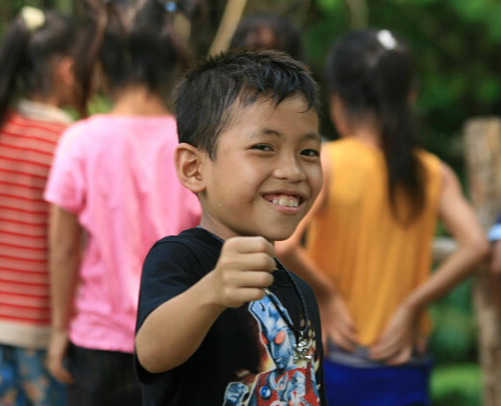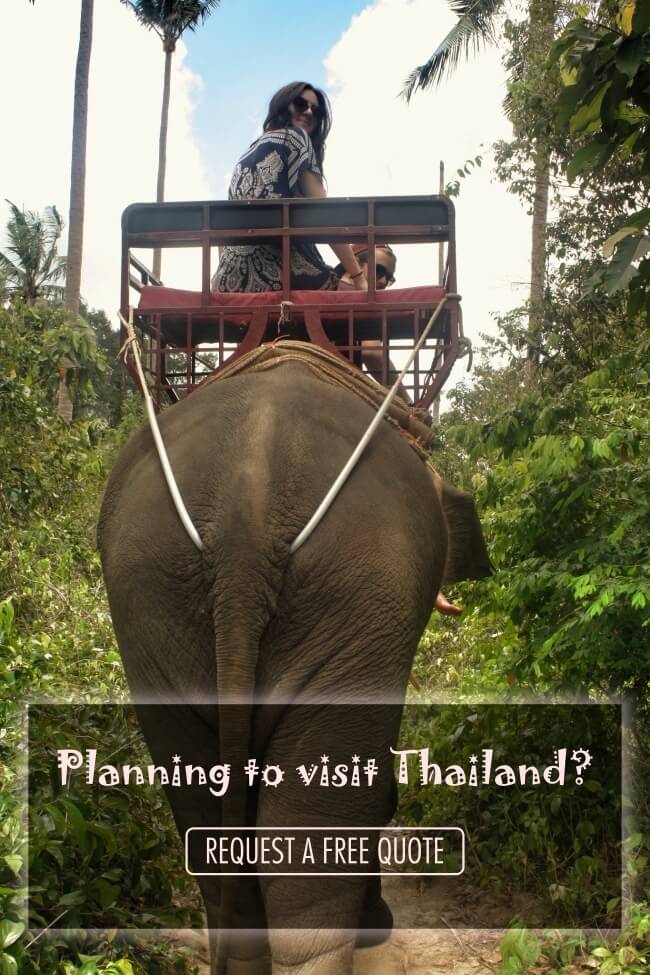What to see
Here are some of the best things to see during your visit to the park:
Haew Suwat Waterfall
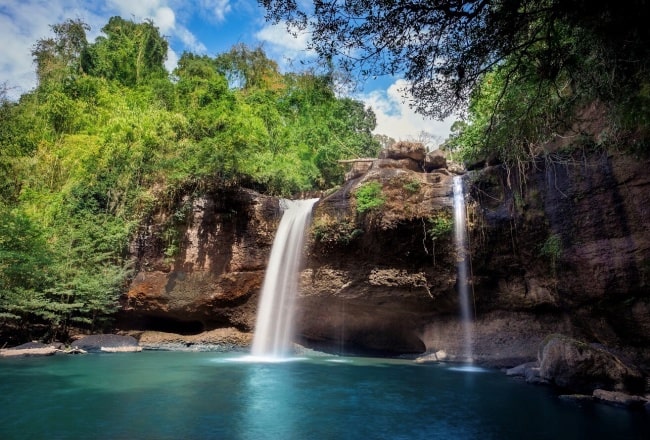
This waterfall was made famous in The Beach and is definitely worth seeing (though unfortunately, you won’t be able to mimic Leo’s classic jump!).
Pha Diew Die viewpoint
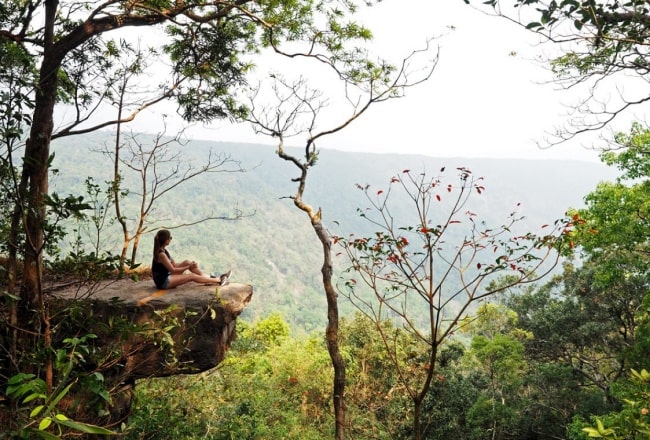
At 1,100m above sea level, this is probably the most breathtaking viewpoint in the park. You’ll get a sweeping view of the whole area and there are usually very few people around.
Haew Narok Waterfall
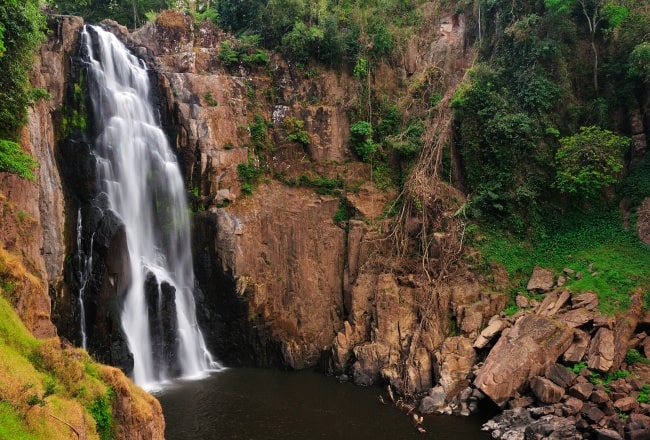
This waterfall translates to “Sunken Hole of Hell” which is a very foreboding name for a gorgeous waterfall! It got its names from poachers who apparently heard the noise of its water crashing long before they saw the water and assumed it the crashing rumble was the gates of hell opening.
Non Pak Chi Watchtower
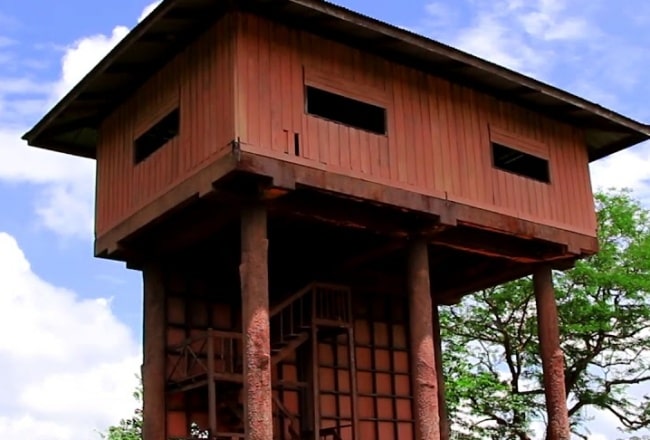
This is a good place to stop to try and see some of the park’s wildlife, such as wild boars and elephants. Aim to be here for dawn or dusk for the best chances.
See elephants (and other wild animals)
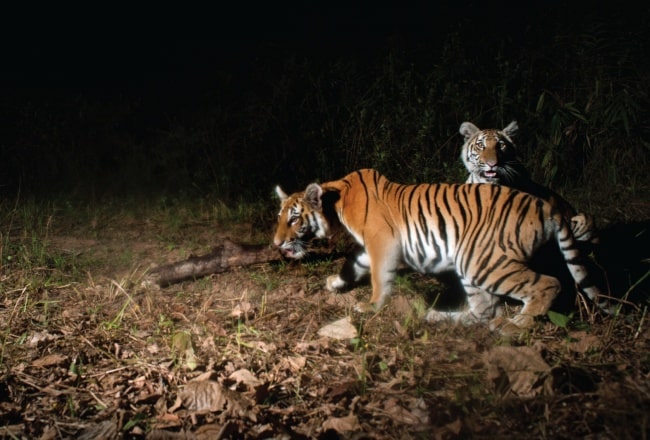
Best found at sunrise or sunset, there are actually hundreds of elephants located in the park. You can find them near some of the salt licks around the park, though you have to be patient (and lucky!). The best way to see them (and other animals) is to go on a night safari, as many animals prefer to be active during the cool night hours. Tours are organized by the park and cost 500 THB per vehicle (which usually has room for up to 8 people).
The prime reason for coming to Khao Yai is to see the amazing wildlife and scenery. The best way to see this is by walking one of the many trails in the park - the easiest can be walked alone but many require hiring a guide as they are not clearly marked and it is easy to get lost.
What to do
Go trekking

The park has some great hiking trails that suit a range of times and abilities - get a map from the visitor centre to see which ones are best for you. The easier trails can be walked alone, a great one to start with is the paved trail running from behind the visitor centre (across the suspension bridge) - the loop takes about 45 minutes. Another easy walk is along the river from Pha Kluamai Campsite to Haew Suwat falls (roughly 90 minutes) - as well as pilated gibbons this stretch of river is home to the 'Khao Yai Crocodile' the parks only known Siamese crocodile. It can be seen basking on the edge of the riverbank near the 'Beware of the crocodile' signs but do not worry Siamese crocs rarely attack people unless provoked! The 5 km trail from Mo Singto (start near the Sai Sorn Reservoir) to Nong Pak Chi watchtower is sign posted and so possible to walk alone but the route is not always clear. For the longer trails its best to hire a guide. These include a 4 hour walk from the visitor centre to Haew Suwat falls and a trek from Haew Suwat to the beautiful Khao Laem grasslands, amongst others.
Watch gibbons
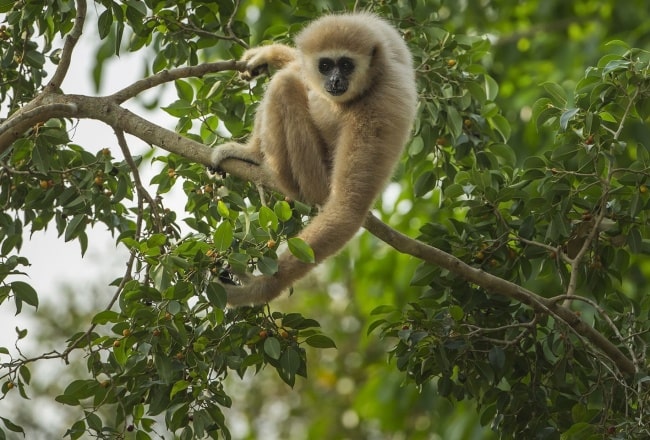
One of the main draws to the park are its two species of gibbon - the White-handed or Lar gibbon and the Pileated gibbon. These are best seen in the morning when they can be heard singing loud whale-like songs from dawn. A number of trails are open for tourists- some of which require a guide. Without a guide, the best chance of seeing Lar gibbons is to cross the suspension bridge at the visitor centre and follow the paved pathway around Kong Kaeo falls. The loop takes about 40 minutes to walk. With luck Lar gibbons can also be seen along the road between the visitor centre to the Ton Sai saltlick. A group can also be relatively easily seen on the paths around Wang Jumpee (scenic rapids). For Pileated gibbons, the easiest route is the well-marked trail from Pha Kluaymai campsite to Haew Suwat falls. This will take about 90 minutes. However, you may need to hitch hike or organise a pick-up to go back along the road to reach your starting point. There are many more chances to spot them on the longer hiking trails, but for these you should hire a guide from the visitor centre.
Encounter elephants
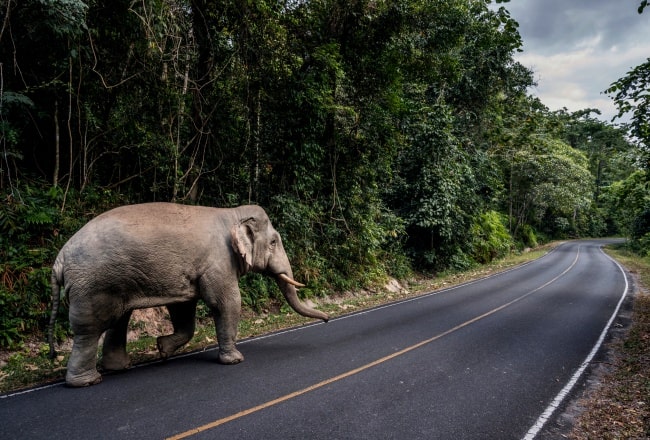
It is thought that up to 400 elephants reside in the park! They are most easily seen in the grasslands around the many salt licks found within the park, with the best chances of seeing them at dawn or dusk. These salt licks can be seen at many points along the roadside or from Nong Pak Chi watch tower. You just have to be lucky. One of the best chances of seeing them is to take a night safari (organised through the visitor centre).
Go birding
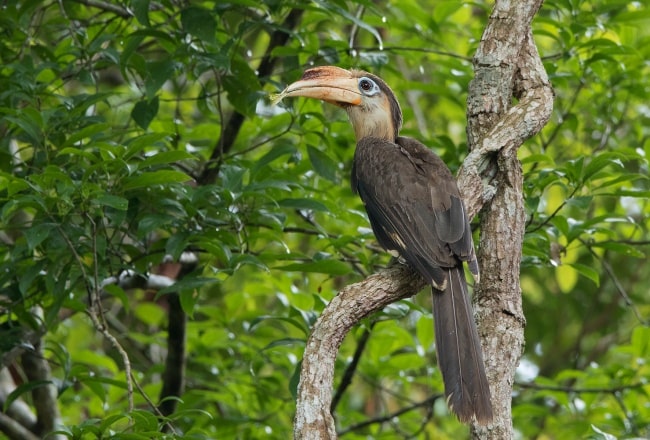
The park is a bird watchers paradise with many chances to see rare and colourful species. There are many great locations!
Bat caves
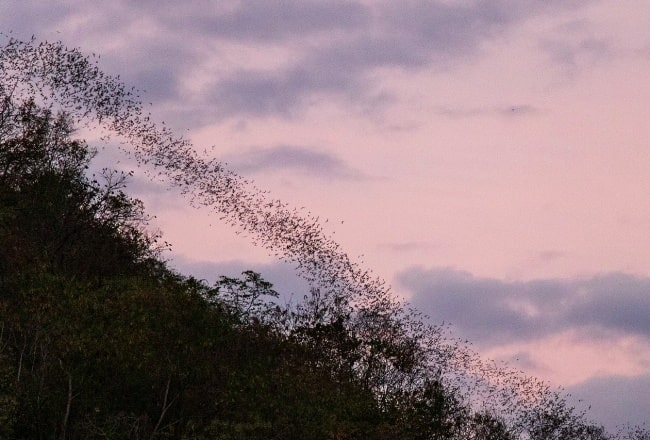
Drive about 3 km to the north of the Pak Chong entrance gate and take a small track on the left-hand side just past a temple. A few hundred metres up here take a right-hand turn and follow the track to the end. Another cave can be found 6 km north of the park. There are two caves near the northern entrance of Khao Yai from which thousands of wrinkle-lipped bats exit at dusk (Khao Luk Chang Bat Cave and another cave). Please do not enter the caves. You will disturb the bats. Best not to use flash photography as this can disturb them. Both caves can be hard to find alone and are best reached via one of the many organised tours.
Go on a night safari

Take a night time jeep safari spotting wildlife - expect to see sambar deer, barking deer, porcupines and civets. Elephants are also seen quite frequently. Bookings can be made directly at the visitor centre in the park or via most nearby hotels.
Gaur Watching at Khao Phaengma
Around 20 km from Wang Nam Khiao, on Road 2072, one arrives at Klong Prakang in Khao Phaengma district. A turn to the left leads to a Khao Yai National Park Conservation Unit. On the northeastern side of the park it is possible to climb the watch tower at Khao Phaengma, a great place for spotting gaur. However, note that this is a separate part of the park in Wang Nam Khiao District.
Dinosaur footprints at Wang Haew falls
Around 20 km from Wang Nam Khiao, on Road 2072, one arrives at Klong Prakang in Khao Phaengma district. A turn to the left leads to a Khao Yai National Park Conservation Unit. Sample some of the parks rich geological history at Wang Haew falls. A longer hike of 3 days – 2 nights include the views of evergreen forests, the Wang Haew Waterfall and the highlight, a dinosaur footprint of Siamopodus khaoyaiensis.













